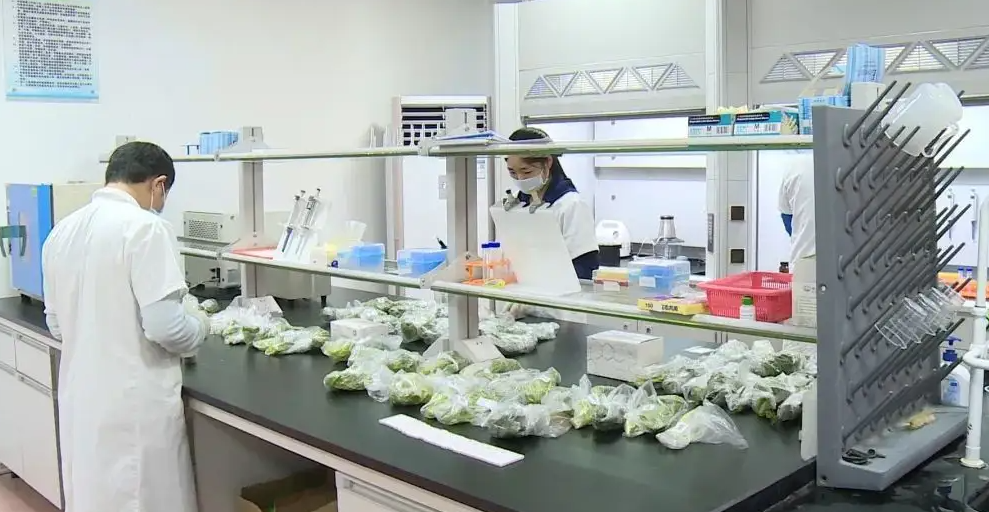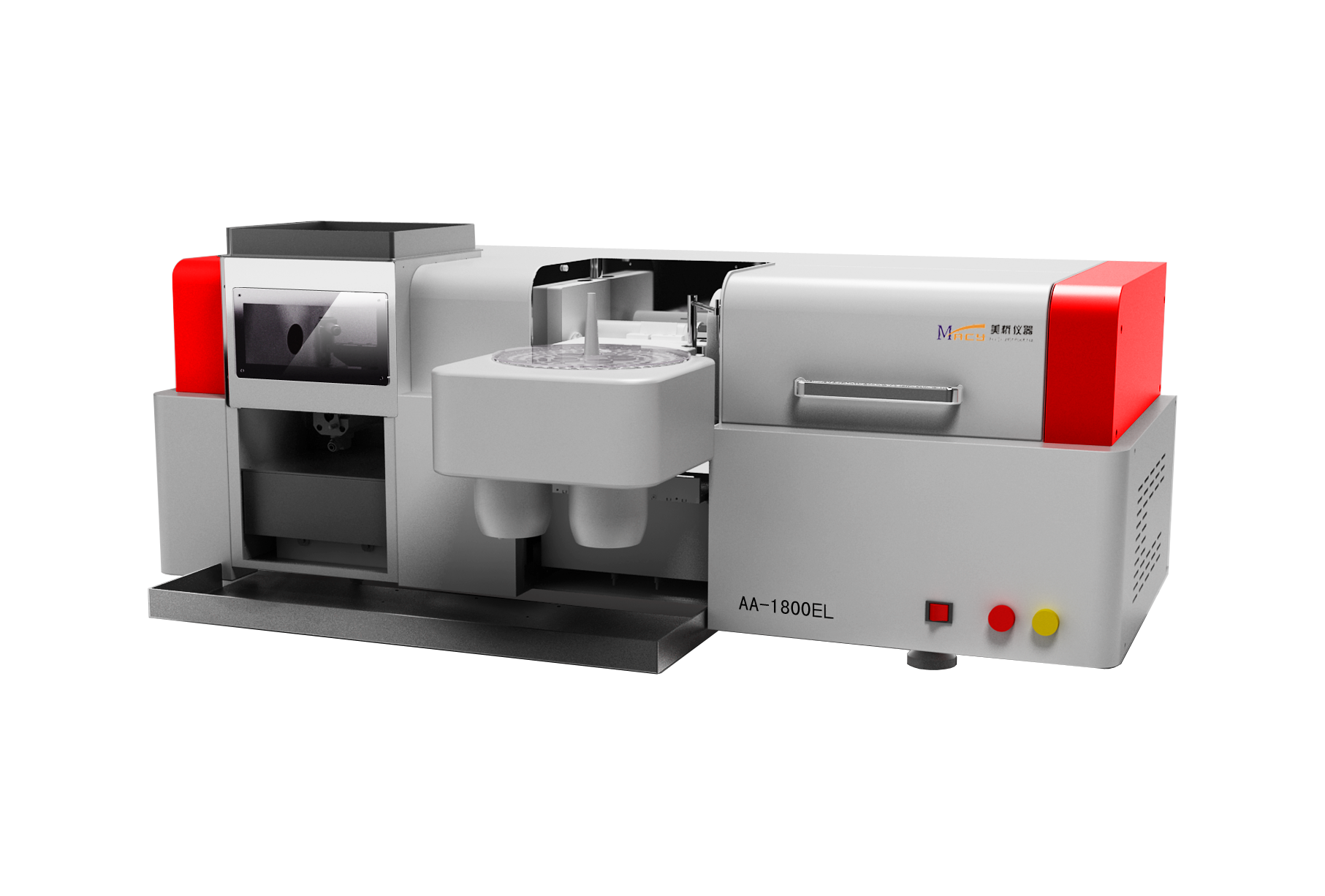Application method of lead, cadmium and chromium in food(Graphite Furnace AAS)
Various limited metal components in food are determined under different spectral analysis with actual samples, in order to achieve the goal of comprehensive application of atomic absorption spectrometry. Select appropriate analysis conditions according to the analysis characteristics of each element, sample content, matrix composition and possible interference. It includes sample preparation, pretreatment, preparation of standard solution and preparation of calibration curve, selection of analysis conditions, operation method, result calculation, data processing and error analysis.

Standard basis: GB/T5009.12-2003/GB/T5009.15-2003/GB/T5009.123-2003/GB/T5009.123-2003 Determination of lead, cadmium and chromium in food
Theory
Graphite furnace automization is the most accurate and rapid method for the determination of harmful metal elements such as lead, cadmium and chromium in food. The detection limit of this method is 5u g/kg. It is a measurement method based on the light absorption of the ground state free atom at a specific wavelength. Its basic principle is to make the characteristic spectrum of the element to be measured radiated by the light source be absorbed by the ground state atom of the element to be measured in the steam when passing through the sample. Under a certain range and conditions, the degree of attenuation of the incident light absorbed is proportional to the content of the element to be measured in the sample, From this, the content of the elements to be measured in the sample can be obtained.
The ground state atoms of lead, cadmium, chromium and other elements in food selectively absorb the co radiation of the hollow cathode lamp, but the specific analysis conditions of each element are different. For example, the determination of lead is in an oxidizing atmosphere, but the determination of chromium requires a reducing atmosphere, and a high-performance hollow cathode lamp is required to obtain sufficient sensitivity. The sensitivity of these elements are different, so the concentration sequence is different when preparing the standard sequence, but they will not interfere with each other at a certain concentration, so their standard solutions can be mixed together for easy operation.
Instrument and Reductant
MACY AA-18800EL Graphite Furnace AAS Spectrophotometer (Background device with gas lamp buckle) and other parts ,like: Air cylinder;
Lead, cadmium, chromium and other elements hollow cathode lamp
Reference reagent: lead, cadmium and chromium standard stock solution. Matrix improvement reagent:
Ammonium phosphate solution (20g/L)
Hydrochloric acid solution(1mol/L)
Sodium citrate buffer solution (2mol/L)
Dithizone butyl acetate solution (0.1%)
Sodium diethyldithiocarbamate solution (1%)
Standard solution of lead, cadmium and chromium series
Reagents for sample digestion and constant volume
microwave digestion
Get 0.2 g~0.8 g (accurate to 0.001 g) of solid sample or accurately move 0.500 ml~3.00 mL of liquid sample to microwave digestion oven , Add 5 ml. nitric acid, and digest the sample according to the operation steps of microwave digestion. Refer to Appendix A for digestion conditions. After cooling, take out the digestion tank, and flush the acid on the electric hot plate at 140 ℃~160 ℃ to about 1 ml. After the digestion tank is cooled, transfer the digestion solution to a 10 ml volumetric flask, wash the digestion tank with a small amount of water for 2~3 times, combine the washing solution in the volumetric flask, and dilute it to the scale with water, then mix it well for standby. Conduct reagent blank test at the same time
User manual
1.Install the hollow cathode lamp of the element to be measured, align the position, and fix the wavelength to be measured and the slit width
2.Turn on the current and fix the lamp current.
3.Adjust the position of the graphite furnace to make it in the best condition, and install the graphite tube.
4.Turn on the cooling water and nitrogen gas sources and adjust them to the specified constant flow value.
5.Setting of determination parameters of each element (refer to Table 5-3-3 Flameless atomic absorption method for lead, cadmium and chromium)
Result
1.Standard curve
Make the standard solution, and then operate according to the sample oxidation and extraction methods. Take 10uL samples respectively, inject them into the graphite furnace, measure their absorbance values respectively, and obtain the linear regression equation of the relationship between the absorbance value and the concentration. (The absorbance of blank is deducted).
2.According to the absorbance of the sample and blank, substitute it into the linear regression equation of the standard series to obtain the content (ug) of a certain element (lead, cadmium, chromium) in the sample solution
Calculation formula
X =(A0一A1)/m
X——Content of certain element (lead, cadmium, chromium) in the sample mg/kg
A1——Weight of certain element (lead, pot, chromium) in the sample solution for determination g
A0——Weight of certain element (lead, pot, chromium) in reagent blank solution ,LG.,
m——Equivalent sample quality of sample test solution for determination, g.
Specification
AA-1800EL AAS Spectrophotometer
Product introduction
AA-1800EL atomic absorption spectrometer is an instrument jointly developed by the industry and domestic professional colleges, and has experience in the research and implementation of the instrument. , The flexible dosing method can meet the needs of different customers, multiple automatic switches can be performed, and analysis and analysis schemes can be carried out respectively, which can meet the needs of different customers.
AA-1800EL atomic absorption spectrometer (eight-lamp flame/graphite furnace integrated machine) is an upgraded version of atomic absorption. The structure, performance and safety performance of the instrument have been comprehensively upgraded. Currently, it is widely used in government environmental protection and disease control. widely used in the field;

Main features
●Polymer spray chamber
Polymer materials corrosion spray chamber, acid and alkali resistance, includinghydrofluoric acid, either organic or inorganic solution can be the highest sensitivity andstability
●Titanium burner
Titanium burner, the optional 50mm and 100mm burner, air cooling pre mixed type,corrosion resistant, resistant to high salt, greatly improve the analysis efficiency andaccuracy of the flame
●Automatic analysis
It can automatically accomplish safety ignition, extinction and switching, reliable structure,low fault rate, thus ensuring the sensitivity and reproducibility of the flame method.
The light source system six lamp automatic conversion, can be directly used high performance hollow cathode lamp, improve the sensitivity analysis of the flame, the automatic justment of the power supply parameters and the beam position, automaticwavelength scanning and searching peak
●Software function
High intelligent software, powerful function, friendly interface English operation.Automatic instruments and additional control, flame, graphite furnace operating mode can be switched automatically, automatic optimization, automatic dilution; mouse operation, automatic setup menu data and correction method
Optical Specifications
Technical parameters
●Light Source:≤8 lamps automatic turret, automatic alignment
●Power Supply:110/220V (+5% ~ -10%), 60/50Hz; 5000VA
●Lamp Current:pulsed power supply
●Optical System:large 1800 /mm grating ruling, full closed optical system
●Wavelength Range:185nm-900nm,Automatically peak find,a key opticaloptimization function
●Wavelength Accuracy:±0.15nm
●Wavelength Repeatability:<0.1nm
●Spectral Bandwidth:0.1、0.2、0.4、0.7、1.0、1.4、2.0nm(7 steps with automatic changeover)
●Baseline Stability:≤±0.002A/30 min (Static) ≤±0.004A/30min (Dynamic)
●Absorbance Range:0-4A
Flame Analytical System
●Detector:imported photomultiplier tube
●Burner Head:full titanium combustion head, 50mm or 100mm generalcombustion head
●Atomization Chamber:polymer explosion-proof spray chamber
●Nebulizer:atomizer efficient glass atomizer, can also be customized
●Ignition Type:microcomputer control, automatic ignition
●Gas Control:automatic gas control system
●Detection Limits(Cu):0.002μg/mL
●Precision:RSD≤0.5%
Graphite Furnace Analytical System
●Heating Mode:vertical heating
●Temperature Control Method:vertical optical temperature monitoring graphite tube wall temperature
●Temperature Range:room temperature to 3000℃
●The Program:automatic temperature control up to 20 order
●Temperature Control:the furnace enriched up to 20 times
●Characteristics Volume:0.4 × 10-12g (Cd)
●Detection Limit:0.4 × 10-12g (Cd)
●Precision:RSD≤2%
●The Cooling Water:can choose cooling water circulation system
●Safety:the graphite tube damage, water flow air pressure and other alarmtemperature overheating protection
Date Processing
High intelligent software, powerful and friendly Chinese operation interface. Fully automatic instrument and additional control, the working mode of flame and graphite furnace can be automatically switched, optimized and diluted; Mouse operation, automatically set menu data and correction method
The whole process analysis information will be provided by the system when graphite furnace is working, , including measured value, temperature, program, time, etc., and save all measured signal curves and temperature curves within the integration time; The measurement data can be displayed dynamically,The standard curve can be automatically fitted; Accurate sample measurement: the sample is set in a wizard mode, which is convenient and fast; Sensitivity correction function: make the measurement result more accurate; Parameter printing, data result printing, graphic printing, and exporting WORD and EXCEL documents.



